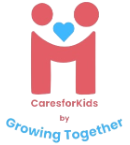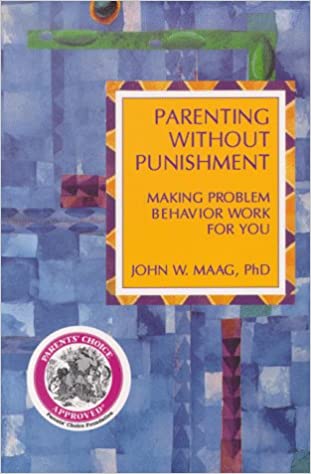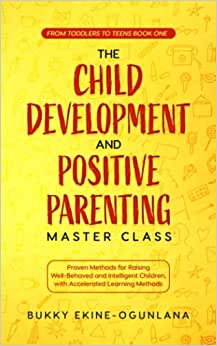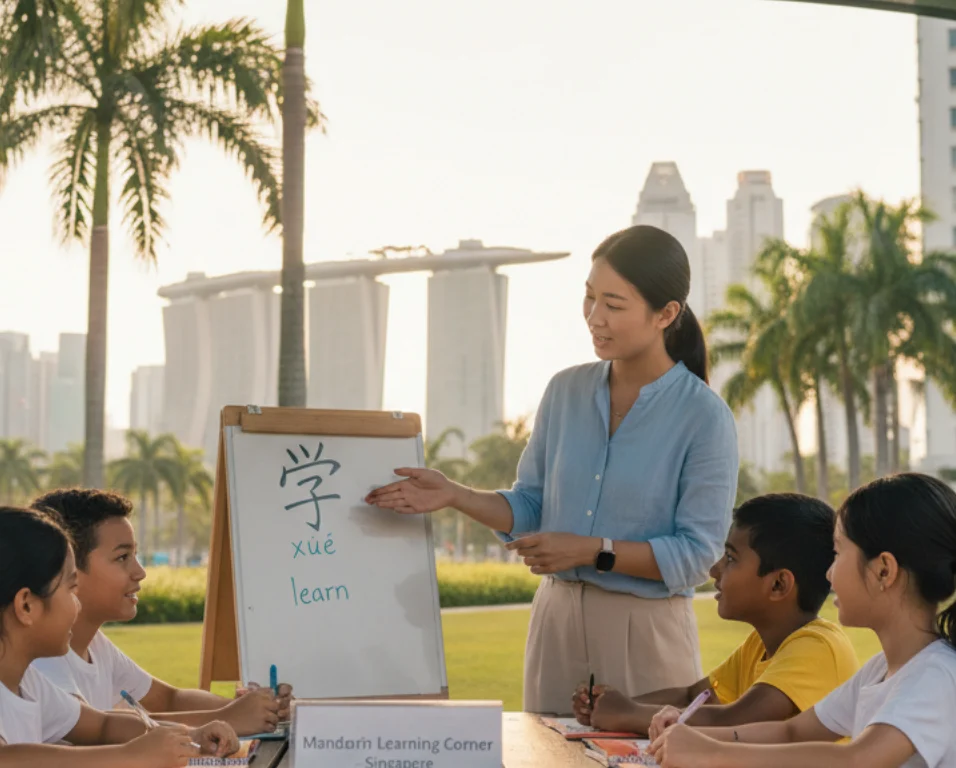Parenting Without Punishment: 8 Tips for Raising Happy and Confident Kids
- by Maryam
- 0 Comments
- 3992 Views
Parenting without punishment – sounds like a challenging task, isn’t it? Well, today we will be talking about this very topic with the aim of debunking any inaccurate notions you may have about it. Now, let’s think for a moment or two. Ever wondered why children act out, throw a tantrum and even hit or bite? What do you do in such instances? Do you punish your children (time-out, scold, spank, etc.) in an attempt to discipline them? Do you look them in the eye and speak to them the way you would like to be spoken to, with respect?
Many parents, especially in our Asian culture, tend to regard punishment rather highly on the “discipline rank”. They feel that in order to ensure their children listen to them and do what they say, punishment is necessary. If punishment is not meted out, their children won’t learn. Hannah from Hannah Home Educates has also mentioned that the terms discipline and punishment are frequently used as synonyms. But why?
I understand the sentiments of those who believe in the notion of punishment. “It works,” you might hear many parents saying. However, punishment does the opposite of discipline. According to a study done in 2009 by Nancy Eisenberg, Lei Chang and colleagues, children who are punished exhibit lower self-regulation and increased externalizing problems than those who are not.
Sure, your children will do as you say when they are punished but it isn’t for the right reasons. Punishing doesn’t teach children a lesson or aid in their moral development. It doesn’t teach them social skills when they are screamed at for not saying sorry. They don’t stop and listen to you because they understand their mistake. They stop because they fear the consequences (punishment). As children mature, they focus on how to avoid punishment rather than not doing the wrong act altogether.
Another repercussion of punishment, and in my opinion the biggest one, is its effect on the parent-child relationship. Punishment indicates conditional parenting which slowly but steadily reduces the trust and bond between parents and their children. It fills children with resentment which makes them defensive and angry. Hence, they will not willingly listen to what their parents tell them to do. Overall, punishment affects all parties involved including the parents.
So the question is: “Do we want children to blindly listen to and do whatever we ask of them at the expense of our relationship with them as parents? Is it worth it?” OR “Do we want to have a good relationship with our children where they learn right from wrong?” If your answer to the latter is a loud and resounding “Yes!”, then you are on the right page!
Now, I’m sure you must be wondering, if not punishment then how else can we discipline our children? Well, below are eight tips on how I discipline my kiddos in school without punishing them. You can bet that these tips will also help you along your journey toward unconditional parenting!
Top 8 Parenting Tips without Punishment with Examples
1. Model
What exactly is modeling? Well, it doesn’t have anything to do with fashion and the runway, in case you were wondering! In this case, modeling is essentially acting in a manner for children to imitate. Why do we need to be models for children though? Children learn through observation. More than listening to what is said to them, they act based on what they see. Hence, they need good models around them to show them how to behave, speak and live in society.
Modeling good behavior is not rocket science. All you need to do is treat your children the way you want them to treat others. When we act with compassion, children will pick up compassion. If we use spankings or scream at children, they too, will use such means to express their emotions. So, be mindful in your actions towards and around children. This also means being nice to those around you. Remember, children are very observant and are watching everything! Specific examples of modeling will be explained more thoroughly in the tips below.
2. Calm Yourself
It isn’t easy to deal with a child who is being difficult. It is not only stressful but can also be overwhelming, especially for first-time parents. When put on the spot, many of us tend to tackle the situation to get it over and done with, thinking it will help ease the wave of emotions we are feeling at that point in time. However, doing so in my opinion is our biggest mistake. Tackling crying children while battling feelings of shame, failure, anger and so on isn’t the best combination.
Hence, the most important thing to do is to make sure you are calm. Take a deep breath, walk away until you are ready then, come back. When you are calm, you think with a clearer mind and are able to make better decisions for your child. It is also the surest way of not regretting any decisions later which is a great bonus! And most importantly, you are modeling a great example for your child!
Sure, it entire process may take longer than if you were to just punish your child. But, it is way more beneficial in the long run. If you are in a public setting like a mall, make sure to remove both yourself and your child from that setting. Find a private space where both of you have time to calm down before going back. DO NOT scold or shame your child.
- Note: Only leave the situation if doing so is safe for your child (when someone else is watching, there are no dangerous objects around, etc.).
3. Solve Problems Caused (if any)
Although not intentional, most if not many instances of tantrums, screaming, kicking and so on are harmful to at least one party. A child may hit, kick or bite his peer out of frustration; one child’s scream may cause another child to cry, and so on. Scolding the child who caused the harm (physical or emotional) does nothing in the immediate moment. Instead, it causes the child to become more defensive and increases his/her intensity f action.
Therefore, if there is another child in the picture, always make sure to attend to the victim FIRST! When children get to see how their actions have impacted others, they will be better able to reflect on the consequences of their actions. Seeing how someone else deals with the situation also provides them with a model of how they can handle future scenarios. In the process, children will be able to learn empathy and the art of rectifying their mistakes in a more subtle, less “in your face” manner.
Besides that, some children behave negatively on purpose to get the attention they lack. Thus, focusing on the victim shows them that such behavior will not give them the attention they want. It is only after the victim is comforted should you focus on the child and their unwanted behavior.
How to focus on the victim?
- Speak to the child calmly.
- “Are you okay?”
- “Are you hurt?”
- “Is there anything I can do to help you?”
2. NEVER shame the child who caused hurt by bringing him/her up. If the victim brings it up, acknowledge it and redirect the focus on thevictim.
- “Oh, XYZ bit you? I see. How are you feeling? Shall we put some ice on that?”
3. Check back with the child before moving on.
- “Are we okay now?”
- “You go have a rest now, okay?”
4. Connect with Your Children
Being frequently termed as “bad behavior”, we are made to believe that children who throw tantrums, do not listen to adults and so on are wrong and must be corrected. Although there is some truth to the second part of that statement, it is important to remember that children are NOT wrong when they behave like that. They are simply acting out in ways they know how to express how they are feeling on the inside. So yes, they should be guided to behave in more appropriate ways. Yet, we should not forget that every expression, albeit inappropriate, has a reason.
As caregivers, we need to be non-judgemental, empathetic and compassionate toward our children. This is because when children are consumed by their emotions, they are hardly in any position to learn. Telling them anything (how they were wrong, what they should do instead, asking them to apologize, etc.) during that time would fall on deaf ears. Worst still, scaring your child by saying things like: “Wait I call the policeman.” or “If you behave like a naughty boy, later the Karang Guni take you away.” will make them feel guilty and less connected to you for not understanding them.
Instead, the better option would be to acknowledge their behavior and try to understand the reasons behind them by providing them with a safe space to regulate their emotions. That way, children will feel safe, heard and in turn, more connected to us. This will then, guarantee that they will be more receptive to our guidance. A bonus is that once you know the problem, you can eliminate it from its root! No problem, no bad behavior and the easier it is to teach alternative ways of self-expression. Also, when children receive empathy and compassion, it is then, easier for them to give it to others.
How to connect by showing empathy and compassion you may ask?
1. Kneel down (not bend!) to your child’s eye level.
2. Use physical contact if your child permits it.
- Pick the child up if he/she is young.
- Put your hand on his/her shoulder or hold his/her hand between yours if they are older.
3. Give your child a warm smile.
4. Speak in a calm manner. Show genuine interest in finding out the reasons for his/her misbehavior.
Note: These verbal prompts are for children who can verbally express themselves, even if it is only a little (can be used even with 2-3-year-olds!).
- “I see that you are angry because…”
- “What do you need? Please tell me using your words so I can understand and support you better.”
- “It’s okay to feel angry. I feel angry too. Why are you angry? Do you want to speak about it?”
- “Oops, there’s some spilt milk on the floor. We’ll wipe it together now but let’s remember to be more careful next time, okay?”
Note: These prompts are catered for those who are not speaking yet. Since they cannot express themselves yet, saying the words for them allows them to model using words appropriately.
- “I see that you are yawning. Are you sleepy? Is that why you are crying?”
- “I know that you feel frustrated when someone snatches your toy. Shall we ask for it back nicely?”
- “Sounds like you are very sad. Let’s sit together until you feel better. I am here for you.”
5. Scaffold, Don’t Scold!
Have you ever seen construction workers use scaffolding to aid them in the construction process? If your answer is yes, I’m sure you must have noticed that the higher the intended structure, the higher the scaffolding. Am I right? And what would happen if the scaffolding were not built at an appropriate height? The workers would not be able to climb high enough nor would they be able to bring the materials needed for further construction.
Well, that same principle works when guiding children. Children are like buildings; with proper guidance, they can touch the skies. Thus, it is our job as caregivers to ensure we guide them so that they can develop to their fullest potential. When children misbehave for whatever reasons, we need to be there to support them and offer solutions. However, we need to remember that teaching and telling are two different things. What we should strive for while guiding is NOT the talk-down approach but the “let’s work together” mindset. That way, children will feel respected and included which will then, make them more responsible for their learning.
How to scaffold appropriately?
1. Provide choices!
Once you know how they feel and why (from the above tip), you can either provide suggestions (to younger children) or ask for suggestions (from older children).
- “When people are in your way, say ‘Please move.’ No pushing, okay?”
- “We don’t bite. Say ‘no’ when someone snatches your toy.”
- “Next time you feel angry, try counting to ten or taking deep breaths.”
- “How else do you think we can act so that others do not get hurt? Is moving away from the situation a good idea? What do you think?”
- “How can we make sure we leave the playground peacefully at the end of ten minutes? How will you know it’s time for us to leave?”
2. Use verbal and visual reminders for future reference.
- Verbal 🡪 bring it up in conversation
- “How are you feeling today? I hope you have a great day in school today! Just in case someone snatches your toy, what are you going to do?”
- Visual 🡪 put up posters/signs (it would be good if the children made them on their own!) so that they are always reminded of more effective ways to express themselves
3. Adjust your scaffolding (frequency) based on your child’s capabilities.
If he/she shows progress, reduce the amount of guidance. If you feel he/she needs more time, continue providing appropriate levels of guidance (not to the point that you are constantly telling them what to do and nagging at them!).
Though the emphasis of this article is on parenting without punishment, it does not mean that you let your children do whatever they want, whenever they want. Guiding and disciplining children is still our responsibility as caregivers. The above tips and examples show us how to deal with children after they misbehave. The next few tips will focus on how to minimize the chances of misbehavior prior to its occurrence.
6. Set Clear Boundaries
As the heading suggests, setting boundaries is a key factor in reducing unwanted behavior. However, it is important that the limits set do not sound like military rules (not too many nor too rigid). People are often swayed by the concept of boundaries. They take boundaries as a set of things that one should not do. On the contrary, setting boundaries is more about the things that children SHOULD or are ALLOWED to do. This way, children have a clearer idea of what is acceptable rather than figuring out what we expect of them on their own.
Speaking of boundaries, ensuring that they are reasonable is crucial. Boundaries that make sense to the children, especially when they are older, will facilitate them in abiding by the limits. When they are able to make sense of the reasons for the boundaries, they will naturally take responsibility. If they are simply doing it because they are told to do so, they will be far less interested in keeping to the limits.
Confused? Well, it’s pretty simple, actually. Imagine being in a meeting. You pitch your marketing idea to your colleagues and bosses. In the end, the feedback you get is, “This isn’t going to work. There are too many loopholes.” Nothing more. Naturally, you would think to yourself, ‘So what now? What else can we do? How should I fix this?’ The whole situation would be a blur, with a sea of possibilities on what to do next. Then, you edit your proposal and get the same comment again. How would you feel?
Children go through this every day. They hear things like, “Don’t run near the road. There are cars.” To a child, it makes no sense. ‘What do you want me to do then? Jump, spin?’ would be the first thought. The next thought would be more prominent in older children, ‘So? There are cars. Okay. But why can’t I run if there are cars? Cars are supposed to be on the road, aren’t they?’ To avoid confusing your children, all you need to do is set clear boundaries and ensure they are reasonable to the children.
How can we do that?
It’s very easy! All you need to do is use positive language to tell children what they should or can do instead of what they cannot. In the process, give them a good reason that they can understand or that relates to them.
- “Balls aren’t allowed inside because it might break the glass pieces and we will get hurt. You can go out to play with the ball or play with something else in the house.”
- “Yes, you can play for only ten more minutes, but we are going straight home after that. It is almost time for dinner and I am hungry.”
- “Screaming is not allowed. It disturbs our neighbours/the baby. Use your indoor voice when speaking to mummy and daddy.”
7. Create Routines and Follow Through
Have you ever been late to work and wondered, ‘Ah, it’s just five minutes. I hope boss won’t mind.’? I know I have and luckily for me, it ended well. However, not everyone is as lucky. It’s the same with children. Children are constantly learning and making sense of the world they live in. They want to know how things work, what social rules they need to abide by, the extent of limits and how far they can push them and so on.
A good way for them to learn all these is by ensuring there are routines for children to follow. Routines have multiple benefits.
- Enables children to predict what will happen.
- Creates awareness for children on what is expected of them.
- Allows children to self-regulate and manage their emotions and behaviour.
- Helps in learning new behaviour and changing old ones.
However, simply creating routines is not enough. We need to follow through with the routines. Praise children when routines are followed and set consequences if they are not. Doing so will encourage children to stick to their routines. Do not over-praise and remember, punishment is not the way! Consequences could include anything from reduced play time to taking away something they like (a toy maybe). Over time, children will know that they must eat before going out to play no matter what they do. Hence, the tantrums or any other unwanted behaviour will eventually stop.
- Note: Denying love, care, affection, food and so on shows conditional love so never do that. Also, do not use chores or food as punishments (give more broccoli knowing they do not like it or make them fold clothes). This will create negative associations with things you actually want children to learn to do.
How to set routines?
1. Pre-empt the children on what they will be doing.
- “First, we will eat. Then we will go out to play.” – When they know the order of events, the chance of throwing a tantrum is lower.
2. When the time comes, remind and emphasize the above.
- “First, we will eat. Then we will go out to play.”
3. If the child throws a tantrum, use the below tips. Wait for him/her to calm down before doing anything else.
- “I understand that you are upset because you want to go to play. Throwing a tantrum is not the way. We will stay here until you are calm.”
- Check on the child every minute or so until they are calm.
- Speak to them again. “Once you’ve eaten, you will have more energy to play. Let’s quickly eat so that we can quickly get ready to leave.”
4. Praise or provide a consequence.
- If the child listens, thank and praise him/her.
- “Thank you for listening. We don’t throw tantrums. Use your words to speak and your ears to listen just like mummy/daddy.”
- If the child does not listen, provide an appropriate consequence.
- “The longer you take, the less play time we will have. It’s your choice. What do you want to do?”
5. Do the same thing every day (routine).
8. Spend Quality Time Together
Due to our fast-paced lives, we generally do not have time or energy to really connect with our children. I know I am definitely too tired after work to do anything else. Therefore, although obvious, spending quality time with our children is one thing that many parents struggle with. It’s really hard, I completely understand.
However, we don’t need to give our children hours and hours of attention. Simply putting aside 20-30 minutes a day is more than enough. During this time, give them your fullest attention. No work calls, no “I’m busy” and no multitasking. Be present in the moment with them. Do what they want and follow their lead. Of course, you can suggest activities like colouring, reading a bedtime story or playing dress up. But, let them make the decision and just go with it.
When they get the attention they want, they will feel connected to you and be open to whatever you have to say in the future. Also, spending quality time with your children will provide them with opportunities to model your actions (how to deal with losing in a game, how to read a long word, etc.) which will support the development of their emotional and behavioural regulation skills. The best part is, you’ll both have fun and you won’t have to be stressed with specifically teaching anything. Your children will pick it up naturally!
In conclusion
Parenting without punishment may seem like a daunting task, but it is an effective and essential method to discipline children. Punishment, though widely used, does not lead to discipline, but rather has negative effects on children’s self-regulation and behavior. Instead, we should adopt an unconditional parenting approach, which involves understanding and addressing the root causes of a child’s behavior, rather than punishing them. The eight tips mentioned in this blog post, such as using positive language, setting clear boundaries, and providing opportunities for children to make choices, can help parents in their journey towards unconditional parenting. Remember, unconditional parenting is not only beneficial for children, but also for the parent-child relationship. It is a win-win situation for both parties.
Written by: Maryam
BA Early Childhood Education with Psychology














